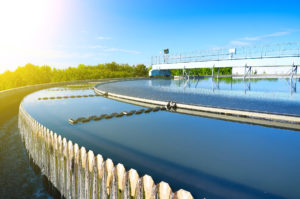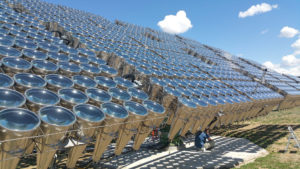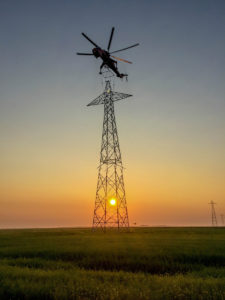Facts, Figures, and Findings from EPRI Research, Reports, and Other Sources

Power plants are using alternative water supplies to meet a range of water needs reliably and cost-effectively, according to an EPRI analysis of 17 facilities across the United States. Traditionally, power plants draw water from rivers, lakes, and other freshwater sources for use in cooling systems and other processes. In some areas, however, water scarcity or quality hinders or precludes their use. Here are key findings for the diverse sources covered by EPRI’s scientific literature review and staff interviews at power plants in different regions:
- Power plants have successfully used alternative water supplies for decades, in numerous applications and ...
Read More

Despite the dominance of traditional flat-plate photovoltaicsflat-plate photovoltaics (PV) in the solar industry, concentrating PV (CPV) technologiesconcentrating PV (CPV) technologies may still gain market share, according to an EPRI report. Between 2009 and the first quarter of 2017, prices of flat-plate PV modules have fallen from $2 per watt to $0.35 per watt, challenging CPV business plans. Globally, the deployment of CPV is negligible relative to flat-plate PV—about 350 megawatts versus 400 gigawatts. Four pathways could allow CPV to succeed:
- PV supply constraints. CPV could become cost-competitive if global demand for PV modules exceeds supply. However, there is little ...
Read More

The growing interest in high-voltage direct current (HVDC) transmission for grid upgrades and renewable energy integration makes it important to fully investigate the technology’s impact on human health and the environment. Unlike prevalent high-voltage alternating current (HVAC) transmission, HVDC lines produce static (zero frequency) electric and magnetic fields, along with air ions. The line’s magnetic field can affect the magnitude and direction of the earth’s magnetic field close to the transmission line. EPRI’s review of the scientific literature found that:
- Research to date has found no significant adverse health impacts of HVDC.
- Research would be useful to further examine ...
Read More

The energy savings of light-emitting diodeslight-emitting diodes (LEDs) depend strongly on the color of light they produce, an EPRI study finds. In recent years, utility energy efficiency programs have achieved energy savings by encouraging customers to switch to LEDs from fluorescent, halogen, and other available technologies. With the introduction of color-tunable LEDscolor-tunable LEDs, utilities find it more difficult to predict savings, because their power consumption varies by color. Their applications can include replicating the sun’s daily color shifts and providing light at wavelengths specific for indoor agriculture. To specify how color-tunable LEDs may affect customer load, EPRI lab-tested 36 products ...
Read More
Read More

EPRI Informs Efforts to Extend Nuclear Plant Licenses in Japan Drawing on decades of technical research on the U.S. nuclear fleet, EPRI research supported a successful effort by a Japanese utility to extend the operating license of three of its nuclear units. Many nuclear plants in Japan are approaching 40 years of age—the endpoint of their original licenses. The Japanese regulator has endorsed a framework, similar to the International Atomic Energy Agency’s International Generic Aging Lessons Learned (IGALL) program, to support aging management up to 60 years. The IGALL identifies areas in nuclear plants that require aging management programs, providing ...
Read More
Read More

